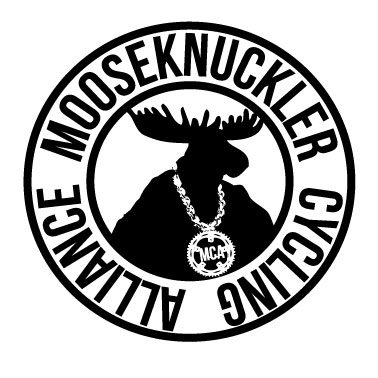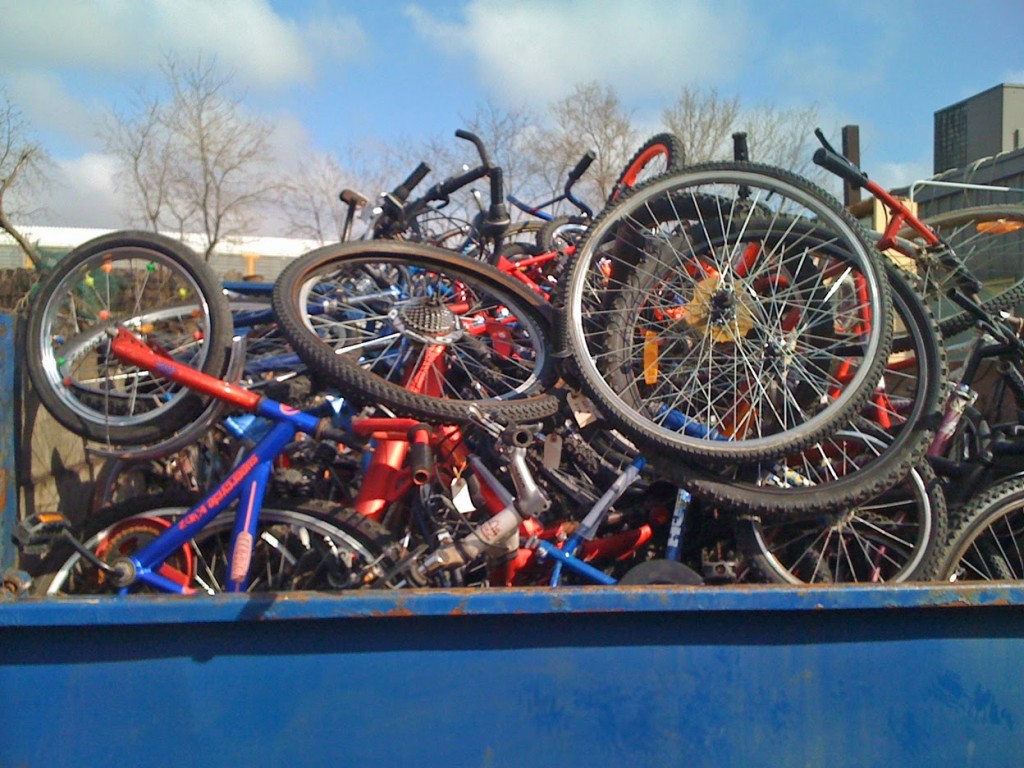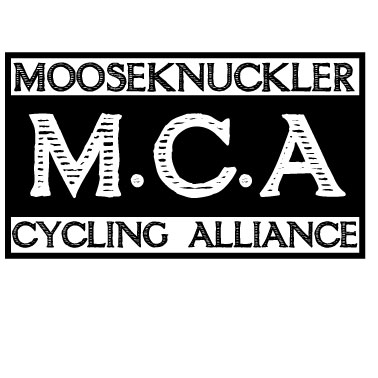Saturday is the day people go junkin’. For those, unfamiliar with said term, Junkin’ is the activity of cruising the yard sales in one’s area and purchasing the junk other people are trying to get rid of. This negatively effects bike shop techs across the entire country. The story is as cliché as they come. Somebody goes junkin’ finds a bike that they think is good but just needs a little work. Said bike is purchased and transferred to the back of a pick up truck that is used to haul it to a bike shop where the intention is to get the little bit of work done, that this awesome bike needs.
This is where junkin’ becomes a problem.
Unfortunately, “good” bikes for sale in someone’s front yard are more rare than complete, functioning Mavic Zap groups. And even more rare than that is that the person selling you a “good” bike isn’t going to know that it is a good bike and will give it to you for $20. So that $20 bike you just purchased in a heap in front of that dude’s house, is worth exactly that, $20. And that’s being liberal with the value. You might be able to get $5 for it, if you recycle it.
And so it goes, that these heaps of “good” bikes show up on the doorsteps of bike shops every Saturday and bike techs around the country are forced to diplomatically explain that yes, in fact, it will cost you at least 5 times as much as what you spent on it for a couple of tires, tubes and a brake adjust. And that is the minimum that can be done to make the bike safe. Sorry that you spent $20 poorly.
In an effort to save bike techs their valuable time and the general public their valuable cash, I have compiled a fail proof guide to buying used bikes. It’s free of charge, all you have to do is continue reading.
1. Get a second opinion prior to purchase.
Are you a self-proclaimed bikenerd? Yes? Ok proceed with your purchase. If the answer happens to be no, you should put your money back in your pocket and pull out your smart phone instead. Dial up your neighbor, son, daughter-in-law, local bike shop, nun or hill-top guru bikenerd friend and ask them if the Mongoose Xtreem you are looking at is a good bike.
2. If you can buy the bike new at a department store, don’t buy it.
Despite what you might think, Mongoose, Next, Schwinn, Magna, Huffy, Murray, Kent, Northstar, etc, are not good bikes. They are what we, in the industry, refer to as disposable bikes. They are so cheap that it doesn’t make financial sense to even replace the tires. When you can buy a bike for just over a $100, you aren’t getting much. If you find one of these bikes at a yard sale, it will cost you way more than that $100 to make it work. I promise and guarantee it. If you ever find one that you think is an exception, call me. If you prove me wrong, I will eat my own shorts.
3. If the chain is red, don’t buy it.
A good indicator of how a bike has been treated is the condition of the chain. When a bike is left outside for ages, it will rust. That rust will be most easily seen on the chain. So if the chain looks like it has weathered many moons on the beach, all the other metal parts that are contained within the bike, ie cables/bearings/spokes, will also be rusted. Rust can be removed, but it’s not worth your time or money to do so.
4. Can you ride the bike home? No? Don’t buy it.
Chances are that the bike you are looking at that some douche is trying to sell you for $20 is going to have flat tires and plenty of other problems. If you can’t test ride the bike, it means that you are going to have to fix all of those problems before the bike can even be used. Can you fix those problems yourself? No? Then you need to factor in the cost of fixing them into the price of the bike. Cheap tires are $20/each. Tubes are around $6. Tech’s time is about $50+/hour. So if the tires are flat, you are going to need new tubes. That’s another $20 at least right on top. You will most likely need new tires as well, there’s another $40. If the bike had a price tag of $80 would you even be considering it? My guess is no, so don’t buy it.
5. Used bikes have no warranty, at all, none.
People often ask why used bikes are so cheap. The answer is the above. Regardless of the fact that good bikes tend to have a good warranty that covers the frame and parts, once that bike is transferred to a second owner, all warranties are void. It doesn’t matter if the frame has a defect, you are on your own. Sure, that carbon road bike you just purchased was a steal at $800 until you notice that the bottom bracket is delaminating and the crack is wrapping itself around to the down tube. Now you have an upcoming $500 plus repair fee to Calfee or you can buy another bike. So you are essentially gambling when you buy a used bike.
6. Does the deal seem too good to be true? Don’t buy it because it is.
There is nothing that breaks my heart more than having to inform a “new” used bike owner that they have spent their money poorly. This is particularly true when the used bike is high-end and at one point may have been worth what they spent. One story jumps to mind. A customer came in with a Stumpjumper FSR Pro. The frame was a little beat up but not too bad. The first thing that I noticed was the parts package was nothing like the original. The rear derailleur was still XTR but the shifters were Deore. The brakes had been taken off and replaced with mechanicals. The fork wasn’t even the right length for the bike and was some Manipoo version of suspension. And of course, the drivetrain was completely fried. As I began going through the bike with the customer and explaining what would need to be done, I quickly realized he had just purchased this bike. He went ahead and divulged that information and confessed to having spent $1200 on this bike thinking it was in fact a Stumpjumper Pro. Which it was, but everything outside of the frame that would make that bike worth the money he had spent was either completely worn out or had been swapped out for something way cheaper. The deal was just too good to pass up.
7. A bike for sale for $20 is worth that or less.
We’ve all heard the stories of people scoring big at yard sales, purchasing a picture frame only to find a Picasso painting hidden inside. I guess those things do happen, but guess what, they don’t happen very often. A person that has quality bicycle that has been taken care of, will know what they have. This means they will not be selling it in their front yard for $20. They might have it at their yard sale but the price tag will be much higher.
8. This is the most important rule of all, unless you are a de facto bikenerd, don’t purchase a bike at a yard sale.
P. L. and R.


